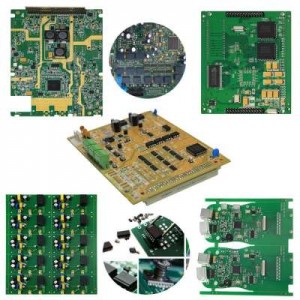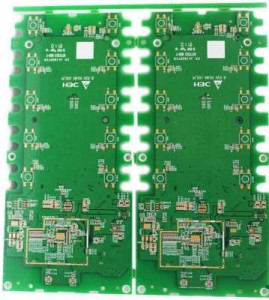After we design the PCB board , we need to choose the surface treatment process of the circuit board. The commonly used surface treatment processes of the circuit board are HASL (surface tin spraying process), ENIG (immersion gold process), OSP (anti-oxidation process), and the commonly used surface How should we choose the treatment process? Different PCB surface treatment processes have different charges, and the final results are also different. You can choose according to the actual situation. Let me tell you about the advantages and disadvantages of the three different surface treatment processes: HASL, ENIG, and OSP.
1. HASL (Surface tin spraying process)
The tin spray process is divided into lead spray tin and lead-free tin spray. The tin spray process was the most important surface treatment process in the 1980s. But now, fewer and fewer circuit boards choose the tin spray process. The reason is that the circuit board in the “small but excellent” direction. HASL process will lead to poor solder balls, ball point tin component caused when fine welding The PCB Assembly services plant in order to seek higher standards and technology for production quality, ENIG and SOP surface treatment processes are often selected.
The advantages of lead-sprayed tin : lower price, excellent welding performance, better mechanical strength and gloss than lead-sprayed tin.
Disadvantages of lead-sprayed tin : lead-sprayed tin contains lead heavy metals, which is not environmentally friendly in production and cannot pass environmental protection evaluations such as ROHS.
The advantages of lead-free tin spraying : low price, excellent welding performance, and relatively environmentally friendly, can pass ROHS and other environmental protection evaluation.
Disadvantages of lead-free tin spray : mechanical strength and gloss are not as good as lead-free tin spray.
The common disadvantage of HASL : Because the surface flatness of the tin-sprayed board is poor, it is not suitable for soldering pins with fine gaps and components that are too small. Tin beads are easily generated in PCBA processing, which is more likely to cause short circuits to components with fine gaps.
2. ENIG (Gold-sinking process)
Gold-sinking process is an advanced surface treatment process, which is mainly used on circuit boards with functional connection requirements and long storage periods on the surface.
Advantages of ENIG : It is not easy to oxidize, can be stored for a long time, and has a flat surface. It is suitable for soldering fine-gap pins and components with small solder joints. Reflow can be repeated many times without reducing its solderability. Can be used as a substrate for COB wire bonding.
Disadvantages of ENIG : High cost, poor welding strength. Because the electroless nickel plating process is used, it is easy to have the problem of black disk. The nickel layer oxidizes over time, and long-term reliability is an issue.
 3. OSP (anti-oxidation process)
3. OSP (anti-oxidation process)
OSP is an organic film formed chemically on the surface of bare copper. This film has anti-oxidation, heat and moisture resistance, and is used to protect the copper surface from rusting (oxidation or vulcanization, etc.) in the normal environment, which is equivalent to an anti-oxidation treatment. However, in the subsequent high temperature soldering, the protective film must be easily removed by the flux, and the exposed clean copper surface can be immediately combined with the molten solder to form a solid solder joint in a very short time. At present, the proportion of circuit boards using OSP surface treatment process has increased significantly, because this process is suitable for low-tech circuit boards and high-tech circuit boards. If there is no surface connection functional requirement or storage period limitation, OSP process will be the most ideal surface treatment process.
Advantages of OSP: It has all the advantages of bare copper welding. The expired board (three months) can also be resurfaced, but it is usually limited to one time.
Disadvantages of OSP: OSP is susceptible to acid and humidity. When used for secondary reflow soldering, it needs to be completed within a certain period of time. Usually, the effect of the second reflow soldering will be poor. If the storage time exceeds three months, it must be resurfaced. Use within 24 hours after opening the package. OSP is an insulating layer, so the test point must be printed with solder paste to remove the original OSP layer to contact the pin point for electrical testing. The assembly process requires major changes, probing raw copper surfaces is detrimental to ICT, over-tipped ICT probes can damage the PCB, require manual precautions, limit ICT testing and reduce test repeatability.
The above is the analysis of the surface treatment process of HASL, ENIG and OSP circuit boards. You can choose the surface treatment process to use according to the actual use of the circuit board.
If you have any questions, please visit www.PCBFuture.com to know more.
Post time: Jan-31-2022






